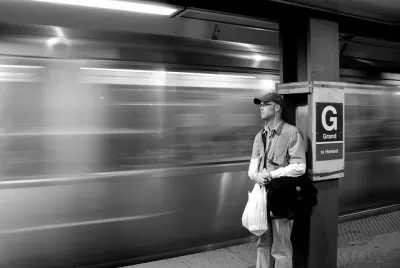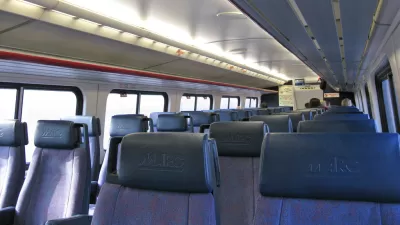While transit agency data shows ridership going down, Census data shows ridership going up. Why?

Over the past couple of years, I have seen quite a bit of commentary about declining public transit ridership (for example, here and here [pdf]). This view seems to be backed up by American Public Transit Association (APTA) ridership statistics, which are based on figures complied by transit agencies. APTA data shows that in 2018, U.S. transit passenger trips declined by 2 percent from the previous year, to 9.8 million, a 9 percent decline from transit's 21st-century peak in 2014. Transit agencies appear to have lost all the riders they gained during the early 2010s.*
However, estimates from the Census Bureau's American Community Survey (ACS) paint a very different picture. The most recent ACS 5 year estimate (based on surveys conducted from 2013-17) shows 7.6 million transit riders nationwide, up from 7.1 million in the 2010-14 estimate.
Even in some of the cities where transit ridership has decreased the most, ACS data shows rising transit ridership. For example, APTA data shows that Washington, D.C.’s subway ridership declined from 271 million in 2014 to 226 million in 2018—a 16 percent decline at a time when national heavy rail ridership declined by only 5 percent. Similarly, Washington's Metrobus ridership declined by 18 percent (from 134 million to 109 million) while national bus ridership declined by about 11 percent.
Yet according to the ACS survey, ridership rose in Washington. In the District of Columbia, ridership rose by about 5000 people during this period (from just over 120,000 to just over 125,000). ACS data also shows modest ridership increases in the two largest suburban counties, Montgomery County (Maryland) and Fairfax County (Virginia).
And in Cleveland, Ohio, APTA data shows that ridership on RTA (the region’s major transit agency) declined from 49 million in 2014 to 31 million in 2018. Yet ACS data show that in Cuyahoga County, Ohio (which includes most of the RTA service area) the number of riders decreased from 28,111 to 27,659—a change that was within the survey’s statistical margin of error
What's going on? Perhaps more people are riding transit but each transit rider is taking fewer trips; this would be the case if (for example) regular transit riders chose to drive or take taxis for non-work trips, thus reducing the overall number of transit trips. Or maybe the ACS is wrong or outdated. Your thoughts?
*However, transit ridership is still above early 2000s levels. 2000 transit ridership was 9.4 million, and 1996 ridership was only 7.9 million. I also note that ridership continues to increase in Canada.

Maui's Vacation Rental Debate Turns Ugly
Verbal attacks, misinformation campaigns and fistfights plague a high-stakes debate to convert thousands of vacation rentals into long-term housing.

Planetizen Federal Action Tracker
A weekly monitor of how Trump’s orders and actions are impacting planners and planning in America.

In Urban Planning, AI Prompting Could be the New Design Thinking
Creativity has long been key to great urban design. What if we see AI as our new creative partner?

Pedestrian Deaths Drop, Remain Twice as High as in 2009
Fatalities declined by 4 percent in 2024, but the U.S. is still nowhere close to ‘Vision Zero.’

King County Supportive Housing Program Offers Hope for Unhoused Residents
The county is taking a ‘Housing First’ approach that prioritizes getting people into housing, then offering wraparound supportive services.

Researchers Use AI to Get Clearer Picture of US Housing
Analysts are using artificial intelligence to supercharge their research by allowing them to comb through data faster. Though these AI tools can be error prone, they save time and housing researchers are optimistic about the future.
Urban Design for Planners 1: Software Tools
This six-course series explores essential urban design concepts using open source software and equips planners with the tools they need to participate fully in the urban design process.
Planning for Universal Design
Learn the tools for implementing Universal Design in planning regulations.
planning NEXT
Appalachian Highlands Housing Partners
Mpact (founded as Rail~Volution)
City of Camden Redevelopment Agency
City of Astoria
City of Portland
City of Laramie




























